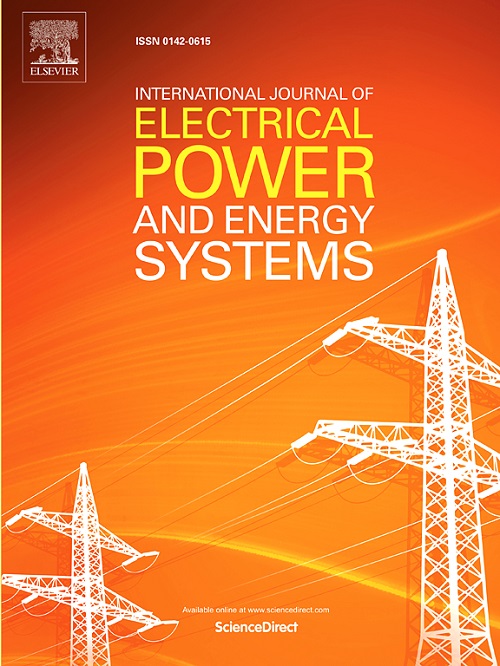混合水热-风-太阳能系统的风险管理经济调度:一种新的多目标优化方法
IF 5
2区 工程技术
Q1 ENGINEERING, ELECTRICAL & ELECTRONIC
International Journal of Electrical Power & Energy Systems
Pub Date : 2025-05-14
DOI:10.1016/j.ijepes.2025.110753
引用次数: 0
摘要
本文提出了一种新的多目标优化框架,用于水热-风-太阳能混合系统(HTWPS)的风险管理经济调度。为了解决可再生能源发电中的不确定性,采用定量回归方法结合多元高斯分布进行情景生成。该模型集成了自旋储备约束和同步调峰策略,以提高系统稳定性和成本效益。采用Pareto准则和模糊理论相结合的多目标人工兔子优化算法(MOARO),在成本和风险平衡的前提下优化调度决策。模拟结果表明,在旱季,增加综合利用流量(DCUF)可使运营风险和成本降低25.4%,而在雨季,由于SR约束,风险保持稳定。采用热旋储备(HTSR)可将运营风险降低79.1%,但成本却增加了22.4%,这是一个关键的权衡。同步调峰策略可降低高达75%的弃电风险。这些发现强调了在混合能源系统中整合风险管理以提高运行可靠性和经济性能的重要性。本文章由计算机程序翻译,如有差异,请以英文原文为准。
Risk-managed economic dispatch in hybrid hydrothermal-wind-solar systems: a novel multi-objective optimization approach
This study presents a novel multi-objective optimization framework for risk-managed economic dispatch in hybrid hydrothermal-wind-solar systems (HTWPS). To address the uncertainties in renewable energy generation, a quantitative regression approach combined with a multivariate Gaussian distribution is used for scenario generation. The model integrates spinning reserve (SR) constraints and a synchronous peak shaving strategy to enhance system stability and cost efficiency. A Multi-Objective Artificial Rabbits Optimization (MOARO) algorithm, incorporating Pareto criteria and fuzzy theory, is applied to optimize dispatch decisions while balancing cost and risk. Simulation results demonstrate that increasing the comprehensive utilization flow (DCUF) reduces operational risks and costs in the dry season by up to 25.4%, while in the wet season, risk remains stable due to SR constraints. Implementing thermal spinning reserves (HTSR) reduces operational risks by up to 79.1% but increases costs by 22.4%, highlighting a key trade-off. The synchronous peak shaving strategy lowers power abandonment risks by up to 75%. These findings emphasize the importance of integrating risk management in hybrid energy systems to improve operational reliability and economic performance.
求助全文
通过发布文献求助,成功后即可免费获取论文全文。
去求助
来源期刊
CiteScore
12.10
自引率
17.30%
发文量
1022
审稿时长
51 days
期刊介绍:
The journal covers theoretical developments in electrical power and energy systems and their applications. The coverage embraces: generation and network planning; reliability; long and short term operation; expert systems; neural networks; object oriented systems; system control centres; database and information systems; stock and parameter estimation; system security and adequacy; network theory, modelling and computation; small and large system dynamics; dynamic model identification; on-line control including load and switching control; protection; distribution systems; energy economics; impact of non-conventional systems; and man-machine interfaces.
As well as original research papers, the journal publishes short contributions, book reviews and conference reports. All papers are peer-reviewed by at least two referees.

 求助内容:
求助内容: 应助结果提醒方式:
应助结果提醒方式:


